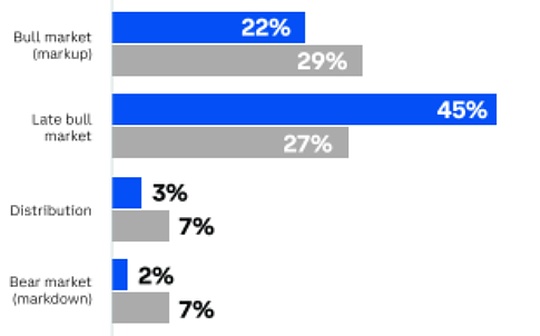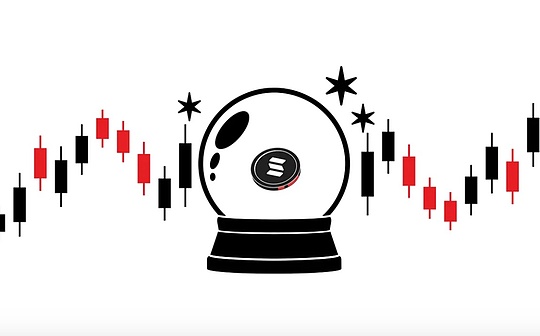
Source: Galaxy Research Director; Compiled by: Bitchain Vision
Cryptocurrency flash crash hits “October” rally (Uptober).The cryptocurrency flash crash of 1011 led to the liquidation of more than $19 billion in leveraged positions and the price of some altcoins plummeted by 50% to 75% in a matter of minutes, casting a shadow over the start of the month with high market sentiment and some major assets hitting all-time highs.
After hitting an all-time high of $126,300 on October 6, Bitcoin traded around $121,000 on the morning of October 10 (US time) before briefly hitting a low of $107,000 that afternoon.While ETH last hit an all-time high just a few weeks ago ($4,955 on August 24), prior to this plunge, it was trading near $4,800 and as low as $3,500.At the lowest point of the plunge, Bitcoin fell 13% intraday, Ethereum fell 20%, and SOL fell 25%.Some long-tail altcoins fell as much as 50% to 75% in this crash.
As Galaxy Research’s Thad Pinakiewicz writes, “High leverage, weak order book depth, and a piece of macroeconomic news triggered the crash.” The move was exacerbated by exchanges’ automatic deleveraging (ADL), which in some cases limited market makers’ short positions, forcing them to significantly withdraw liquidity.Ultimately, the market stabilized late Friday night and recovered significantly last week.
However, risk appetite weakened due to slight weakness in microchip stocks, hawkish rhetoric from Federal Reserve Governor Christopher Waller (despite his previous dovish stance), weakness from regional banks, and comments from President Trump regarding his talks with Russian President Vladimir Putin.Bitcoin is currently trading at its lowest levels since June.Meanwhile, gold and silver prices both hit all-time highs, exceeding $4,300 and $54 an ounce respectively.
Galaxy’s take:
Markets entered October on a high note of sentiment, but after mid-month, the fundamentals of the cryptocurrency and stock markets became decidedly more fragile.Bitcoin is down 16% from its all-time high of $126,200 on October 6, and the S&P 500 is down 1.85% from its all-time high of 6,735 on October 8.Other cryptocurrencies have mostly underperformed Bitcoin.Risk aversion in October was further reflected in record gold and silver prices, as well as the 10-year U.S. Treasury yield falling below 4% for the second time in more than a year.
Perhaps the most significant factor behind the risk aversion is concerns about whether the artificial intelligence-driven capital spending boom may be in a bubble.Respected investor Paul Tudor Jones told CNBC last week that the current investing landscape “feels like 1999” and that “all the ingredients are in place for some sort of explosion.” Others have criticized the cyclical nature of some announced AI deals, in which chipmakers acquire stakes in hyperscalers alongside GPU acquisitions or vice versa, raising concerns about isolated deals leading to higher stock prices.However, this AI boom is driven by large, well-funded investment-grade companies, not just a speculative frenzy or cycle.Some examples include the $40 billion sale of Aligned Data Centers to a consortium led by BlackRock and Nvidia, Google’s mega-deal with OpenAI and Coreweave, Meta’s recent $1.5 billion deal to build a new data center in Texas, Microsoft’s deal with Nscale, and more.These are real money investments for the future by deep-pocketed existing players, not speculators chasing fantasy.
While the U.S. government strongly supported the development of the Internet in the 1990s, by 2025 its support for artificial intelligence will be even more significant.According to our analysis, in the 1990s, the U.S. government spent only a few hundred million dollars a year on Internet-related R&D through projects such as the High Performance Computing and Communications and Next Generation Internet programs.Even if we include the E-Rate program to connect schools and libraries, which cost about $2.25 billion but was funded by telecommunications fees rather than the federal budget, the federal government’s investment still amounts to about 0.1-0.2% of annual federal spending (or 0.03% of GDP).By comparison, the federal government itself will spend $3.3 billion annually on AI R&D by 2025, plus $45 billion in semiconductor and infrastructure incentives under the CHIP Act, which amounts to about 0.7% of the federal budget (or 0.15-0.2% of GDP) and roughly 7 times the annual spending during the growth of the Internet in the 1990s.While the U.S. government viewed Internet construction primarily as an economic and educational opportunity in the 1990s, by 2025 the U.S. government had made clear that the race to build AI was a geopolitical priority, launching a national “Artificial Intelligence Action Plan” and articulating it from an almost life-or-death geopolitical perspective.We believe that competition between countries makes the development of artificial intelligence look more like a new space race than the formation of another dot-com bubble.It could very well be upgraded to a new “Manhattan Project.”In 1944, Manhattan Project spending peaked at 4-5% of annual federal spending (approximately 0.85% of GDP).It is no exaggeration to say that to this extent, artificial intelligence could turn into an arms race – artificial general intelligence (AGI) may be in jeopardy, and which country achieves it first will determine the global balance of power for decades to come and beyond.All in all, government support for AI is significantly more positive today than it was in support of the Internet before the dot-com bubble of the 1990s, and may become even more so.
Given the enormous potential of AI, like the rise of the internet, it is impossible to quantify its impact on the market as it continues to grow and penetrate the global economy.While the “dot-com bubble” did burst in 2000, it was only a partial peak, and even those who bought at the peak of the S&P 500 would have been handsomely rewarded if they had held on to this day.The point is that huge structural innovations lead to booms, and booms lead to bubbles.But if the exuberance is justified, even if the road is rough, good results will usually come of it.We believe that AI’s impact on the economy is still in its very early stages, and that its eventual game-changing future will require more capital spending, more energy utilization, and more infrastructure.
Cryptocurrencies are caught up in this anxiety to some extent and are themselves under market pressure.Most recently, the October 11 flash crash dealt a major blow to asset prices, creating a short-term price mechanism characterized by fragility and silence.But enthusiasm for digital treasury companies (DATs) has also waned over the past few months, with overall stock prices in the nascent industry generally lower.We don’t know if “the bubble has burst” (as BitMine Chairman Tom Lee said last Thursday), but possible investor fatigue contributed to the share price decline.As stock prices fall, so does the ability of these companies to raise capital, reducing the structural and price-insensitive cryptocurrency purchasing power that can be deployed.
Despite this, we still believe that the market landscape for digital assets is still quite optimistic.Bitcoin, as digital gold, remains well-positioned to capitalize on fundamental market doubts about government fiscal and monetary prudence.And the rise of tokenization and stablecoins, coupled with the extremely favorable regulatory outlook in the United States, should boost the prospects for other important digital assets such as ETH and SOL.
There is an old saying that goes: “The market climbs on the wall of worry.”We do continue to move upward at the moment, and the worries never go away.Does this mean we are on the right path?Maybe so – but if Uptober is just that, then the team responsible for “November promotion” may have their hands full.







